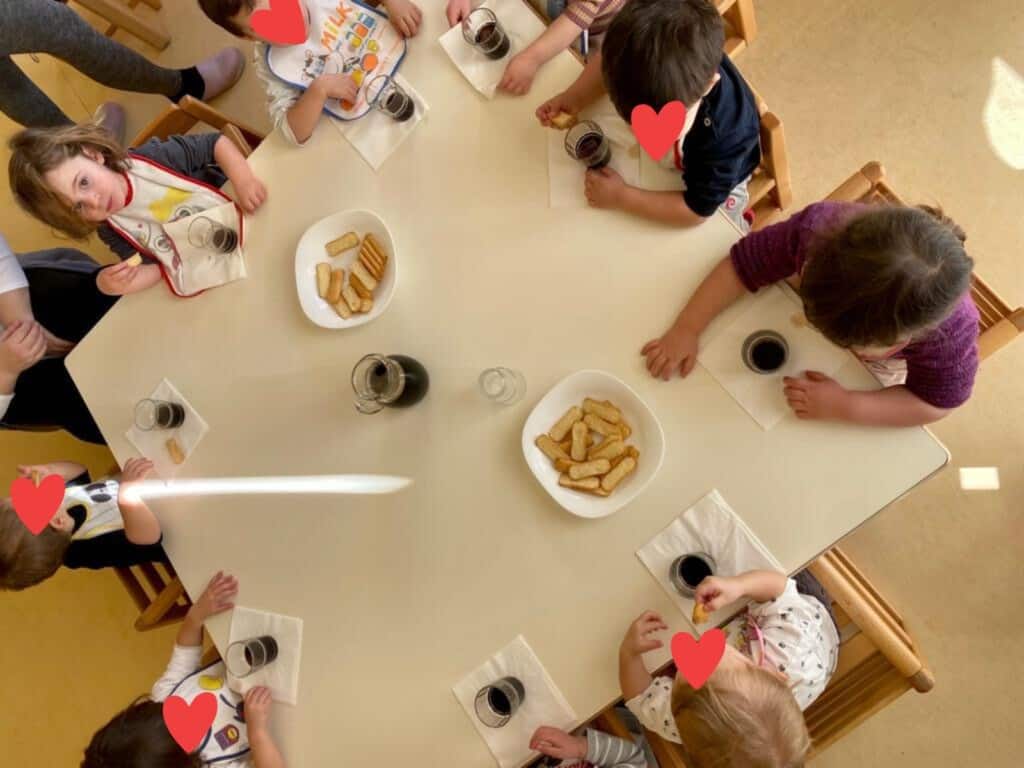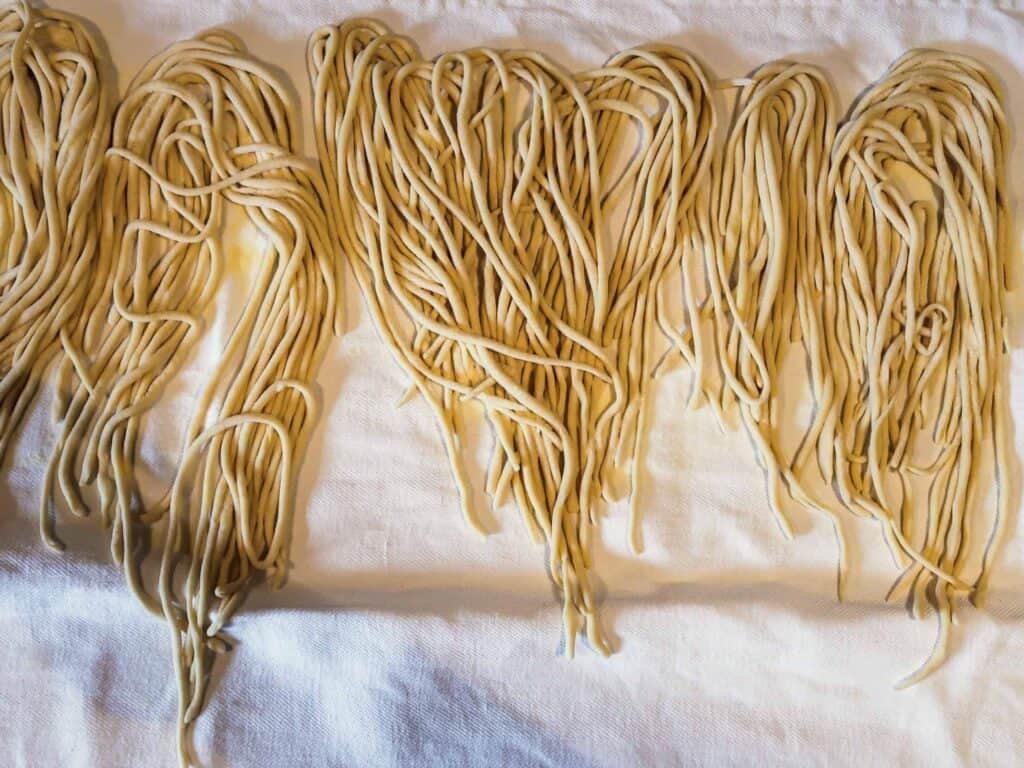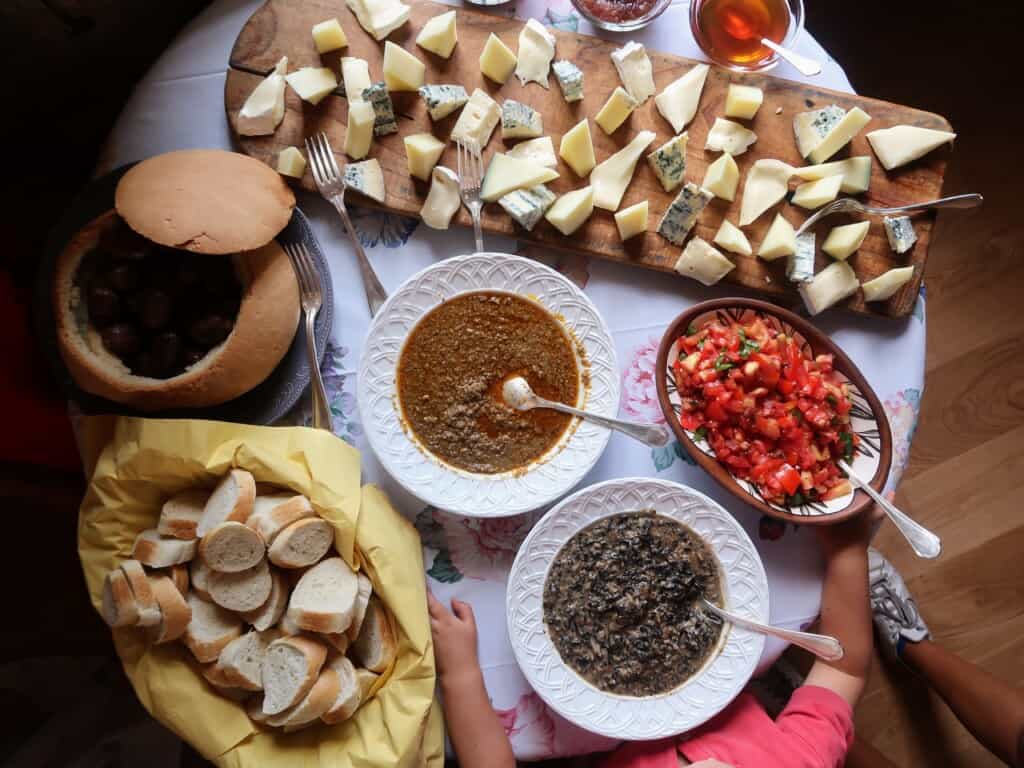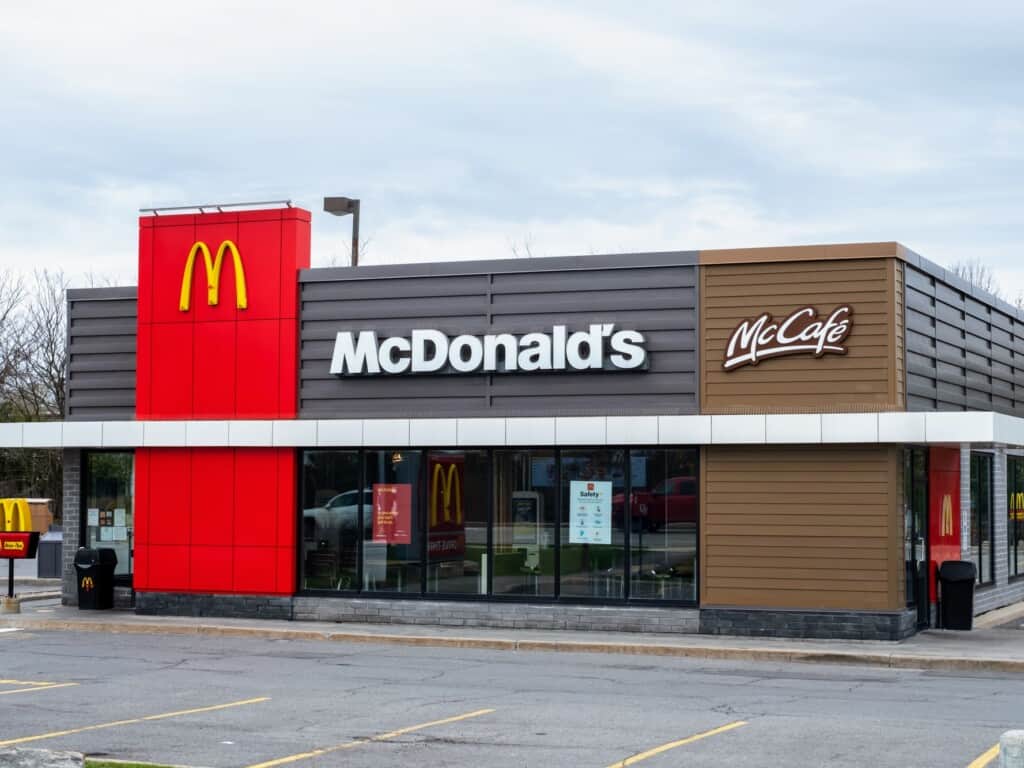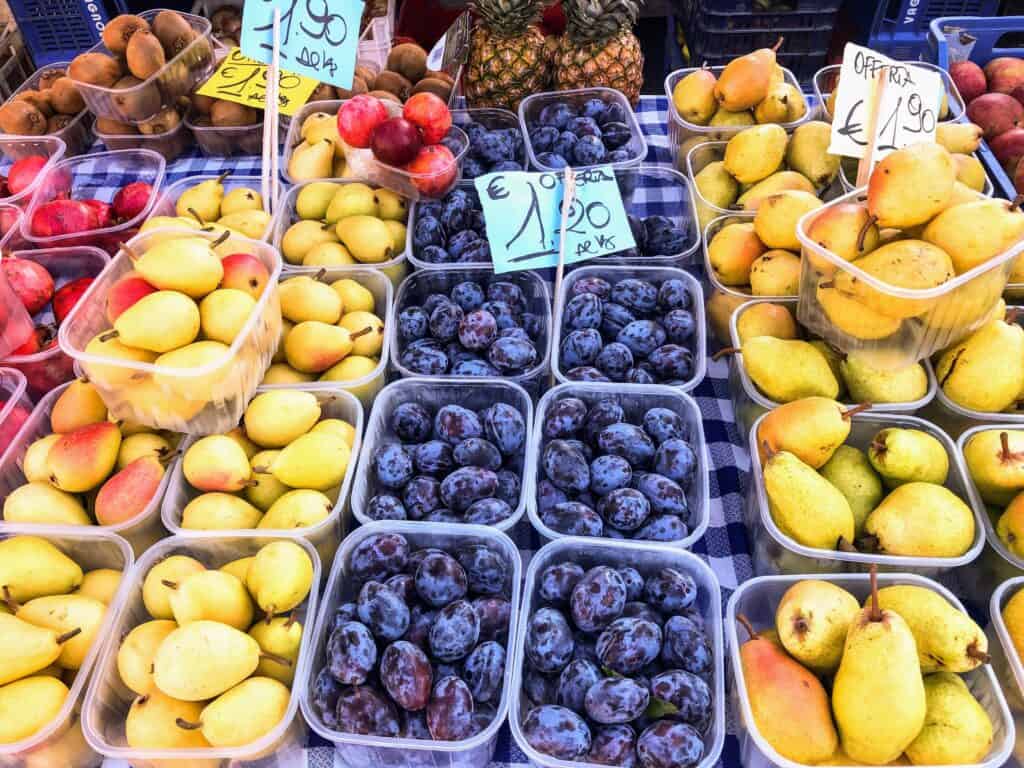Last updated on April 19th, 2024
Have you ever wondered what Italian children eat for lunch at mensa (the cafeteria) on a daily basis? I always was curious and thought it must be a dream to be a kid in Italy. No sloppy joes and chocolate milk!
I am a mom of four living in Italy and have seen my share of Italian school lunches. And guess what? They’re a mamma’s dream! The food isn’t gourmet by any means but it certainly reflects the typical Italian diet.
My kids are lucky enough to eat a wide selection of pasta, rice, whole grains and soup followed by a second course, vegetable and seasonal fruit every day at school!
In this article, I will share with you what Italian lunches look like for kids at public schools in Tuscany. I’ve also had plenty of school lunch conversations with mom friends around Italy. Read on to get a good idea of a typical Italian school lunch.
Jump to Section
School Lunches In Italy – An Overview
Italian school lunches are well-balanced, consisting of:
- a first course
- a second course (protein source)
- a side dish
- regional bread
- usually seasonal fruit to finish
No matter which of my children’s menus I look at, I see very little repetition. Italian school lunch menus have a wide variety of seasonal and regional foods.
The school menu is usually changed two or three times a year to reflect the season. Menus are planned based on what is grown locally and to embody the regional culinary traditions. This means that in Tuscany my kids eat foods such as pici, pappa al pomodoro and ribollita. In Northern Italy, Italian kids eat foods like canederli, spaetzle and gnocchi more often.
You cannot choose what you eat at mensa in Italy. There are only two exceptions which are for religious reasons or for medical reasons. For example, if you have been sick you can order un pasto in bianco, meaning a “white meal” that is made without seasoning and items that can upset the stomach. It usually means pasta with olive oil and butter, mashed potatoes and some chicken breast. If you have allergies or intolerances, there will always be accommodations made.
The food served in the cafeteria will either be prepared on site, partially prepared or fully catered from a third party. Over the course of raising four kids, I have had experience with each and the best school lunch is always the one prepared on site at the school, not outsourced and delivered.
Generally speaking, an Italian school lunch will reflect the Mediterranean diet guidelines which contain:
- a plant-based diet with a lot of legumes, fruit and seasonal vegetables
- Moderate weekly portions of dairy
- Some fish and poultry
- Almost no red meat
- Very little sugar
A Typical Italian School Lunch Menu

Italian school lunches, governed by the Ministry of Health, reflect the local culinary traditions and regional dishes. No matter which region you are in Italy, the school lunch will follow these general guidelines outlined by the government:*
- Pasta, rice, or other whole grains are served daily as a primo
- Beans, lentils (on their own or in soups) or other legumes served twice a week
- Meat, fish, eggs, or cheese served daily as a secondo
- One vegetable and one fruit must be served daily based on seasonal availability
- Pizza or lasagne permitted maximum once a week (but I never see it more than once a month)
- Processed meats such as prosciutto may only be served twice a month
- Olive oil should be used instead of other forms of fat, when possible
*Source: Italian Ministry of Health
Courses Of An Italian School Lunch
All Italian school lunches will start off with some kind of starch, il primo, followed by a protein source, un secondo, served with a side dish and bread and finished with either fruit and sometimes a dessert.
Primo

A primo at a school lunch in Italy will either be pasta, rice, polenta or a soup. If there is meat in the first course (such as a ragu or meat sauce), eggs or cheese will be served as a second course.
Secondo
A second course in Italy, known as il secondo is the protein and is most likely fish or poultry, eggs or cheese. There may be red meat once in a while or other cured meats or sausages.
If cheese is served, it’s a small amount such as a wedge of a hard, regional cheese, a piece of mozzarella or even ricotta cheese.
If pizza is served, there won’t usually be a first course, just a side and fruit or dessert.
Contorno
A side dish is always served with the secondo, usually a vegetable such as carrots, potatoes (not a vegetable in my opinion but it’s often counted as one here), spinach, salad, zucchini or peas, for example.
Fruit and Dessert
Most Italian school lunches are finished with a piece of seasonal fruit or sometimes a dessert such as a crostata, gelato or simple cake, like Italian apple cake.
Quality of Italian School Lunches
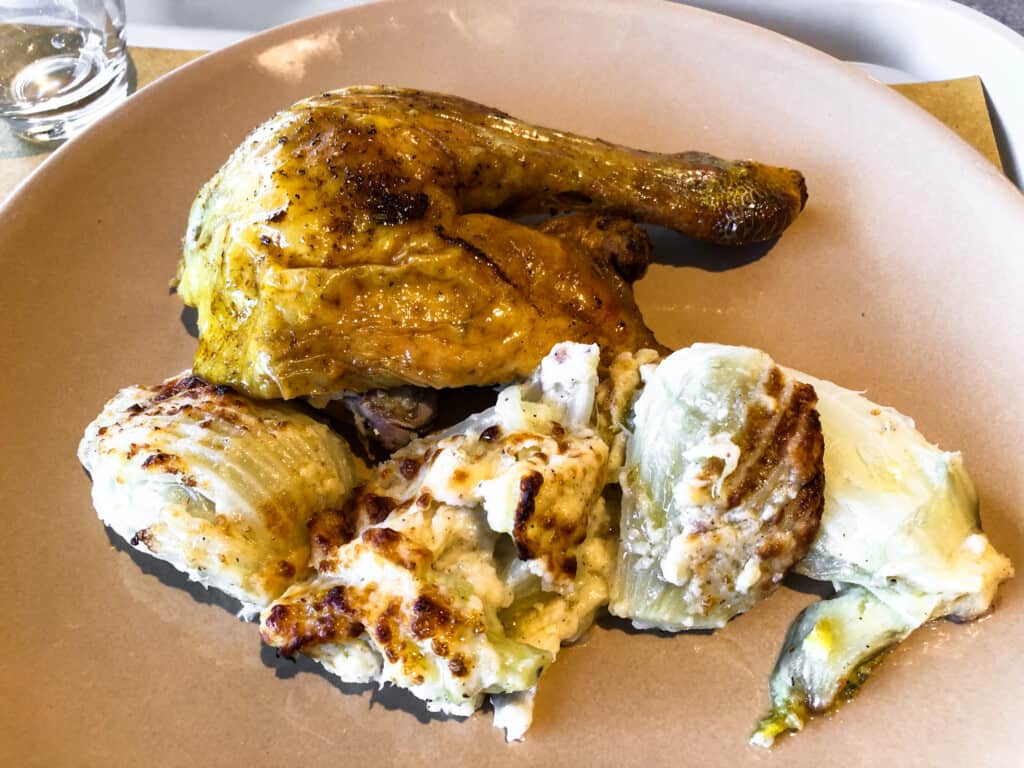
Italian school lunches are generally of very high quality. They use seasonal and local ingredients when possible, ensuring a well balanced and varied diet.
It’s not uncommon for certified food products such as DOP and IGP to be used in the cafeteria, ensuring the best quality possible.
Cultural And Regional Variations In School Lunches

Just as regular regional food traditional change depending on where you are in Italy, the Italian school lunches do as well.
Each region takes pride in serving the local specialties with particular attention to what grows well locally. For example, my children went to school in Umbria for three years where we saw a lot of zafferano (saffron), which grew locally. Just across the border in Tuscany, where my kids go now, I haven’t seen saffron once on the menu in four years!
In Lazio, for example, kids eat a lot of simple pasta dishes such as carbonara, cacio e pepe and pasta arrabbiata. In Piedmont, kids eat much more polenta and rice as a first course with very little pasta compared to Southern Italian regions.
Coastal cities and towns eat more seafood while inland schools incorporate more poultry and cheese.
Italian School Lunches Vs American School Lunches


There are several key differences when it comes to Italian school lunches and American school lunches as described here:
| Italian School Lunches | American School Lunches |
| Three course meal with fresh fruit | One course not always with fresh fruit |
| Set menu without a choice | May have a choice |
| Limited use of frozen or out of season ingredients | Commonly prepared with frozen or out of season ingredients |
| Well balanced and varied | More limited and repetitive |
| Served with bread and water daily | Served with a choice of milk, water and maybe even juice |
| More expensive | Less expensive |
| Government subsidized | Government subsidized |
| Changes regionally and seasonally | Generally doesn’t follow the seasons or have geographical differences |
| Must eat school lunch | You can choose to eat school lunch or bring your own |
Cost Of Italian School Lunches

One of the reasons school lunches are so good in Italy and of such high quality is because of government and local funding.
Government funding is used to pay in part not only for the ingredients and uphold the varied menu but also goes into the salaries paid out to the staff, facilities and maintenance involved in feeding Italy’s future generations.
If there is any difference in the quality or proportions of Italian school lunches across regions and even municipalities, it’s because local governments have invested more money into the school system.
Parents are asked to pay for school lunches, the price dependent on your income. There are three or four brackets that a household will fall into based on their earnings. The cost of a school lunch will be anywhere from free to five euros a day.
Where Is School Lunch Served
Most school lunches in Italy are served in the cafeteria. In some schools, however, they may eat in the classrooms but this is not the norm.
In schools that only go until 1:00 pm (often in rural areas), children come home to eat with their families.
Principles And Traditions Of Eating Lunch At School In Italy

There are many reasons that kids aren’t allowed to eat their own food from home in Italy but based on my experience, I believe that the main reason is to promote the principles of good eating habits that shape the culinary traditions rooted in Italian culture.
By these traditions, I mean eating good food in good company. It means eating slowly and enjoying what is being served and being grateful for what you have. It means breaking bread and finding common ground with everyone, not just those who you are friends with, including your teachers who eat with the children at school.
For Italians, breaking bread in convivialità or in good company is still such a ritual part of their day, one that is instilled from young childhood, starting at the mensa scolastica or in the school cafeteria together.
Kids in Italy: Curious to read more about eating with kids in Italy? Check out
Best Squares To Eat And Drink With Kids In Venice
8+ Kid Friendly Restaurants In Venice – From A Mom Of Four Living In Italy
Where To Get A Quick Bite With Kids In Florence (Without Going Out Of Your Way!)
Where To Eat With Kids In Florence
School Lunches In Italy – What An Italian School Lunch Menu Looks Like
Kid-Friendly Foods to Order at Restaurants in Italy
Dining Out With Kids In Italy – What To Expect + Tips
School Lunches in Italy
